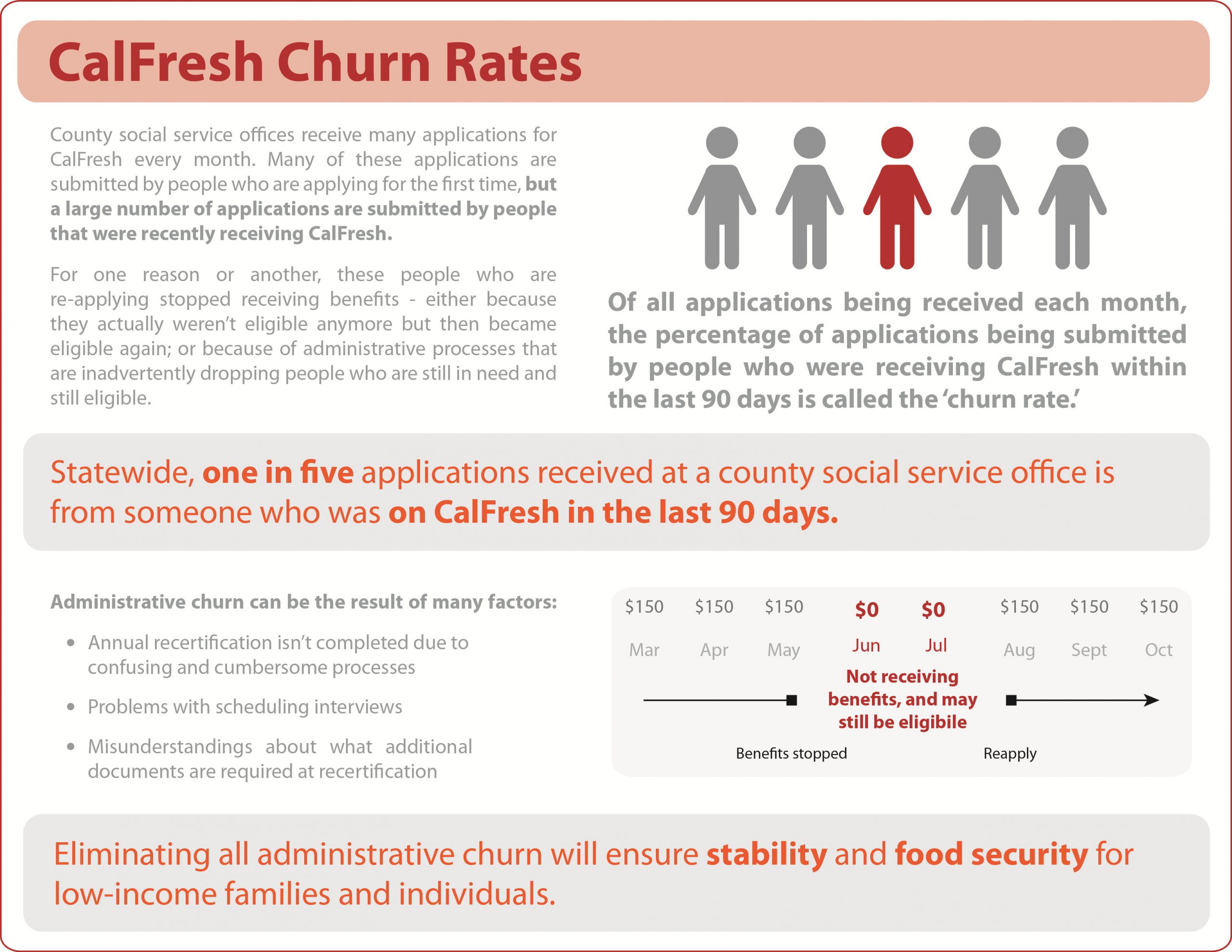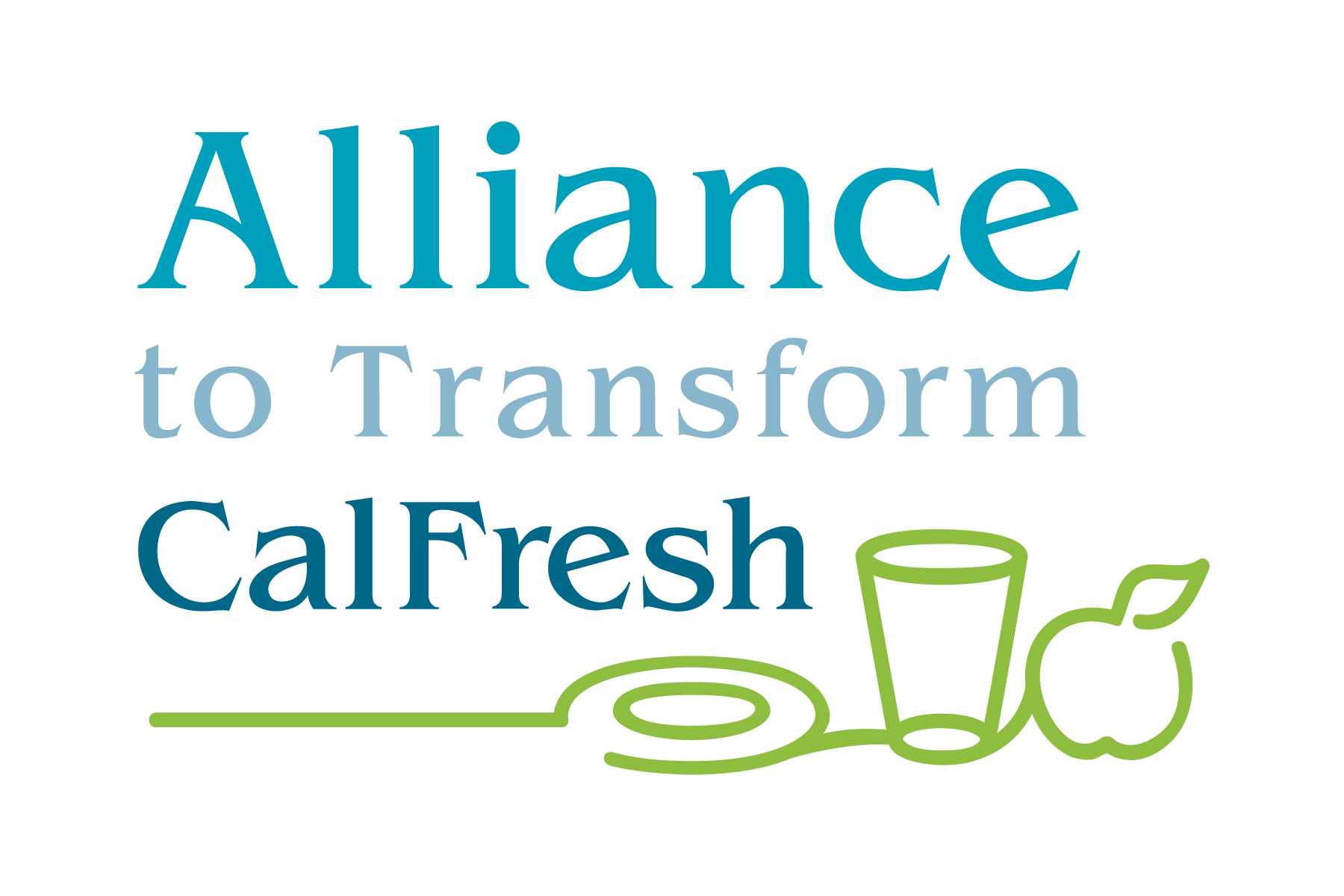Table of Contents:
What is Churn?
Measuring Churn in California
Reducing Churn to Zero
资源资源
What is “Churn?”
Too many people who still need and qualify for food assistance from CalFresh are losing help for administrative reasons — not because they no longer need or qualify for help. This interruption of service creates hunger, hardship, and instability for that family.It also usually leads to a re-application, generating redundant paper work both for the family and the county serving them. This problem is called “churn” and it is hampering Californians’ participation in CalFresh (or SNAP), the nation’s number one defense against hunger.
Read our fact sheet on churn >>
Watch September 30th’s webinar on churn >>
See the slides from September 30th’s webinar >>
Measuring Churn in California


Data as of 9/30/2014. Graphics prepared by Becky Gershon, San Francisco-Marin Food Bank
How can I find my county’s “churn rate?”
Please see the Data Dashboard for CalFresh >>
How do I use the Data Dashboard?
The Advocate’s Guide for Using the Data Dashboard for CalFresh >>
Reducing Churn to Zero
- Track the problem
- Further refine CDSS and county tracking of churn, as reported in the Data Dashboard for CalFresh by using standard codes and metrics across counties that can help i) separate out administrative versus eligibility-related reasons for loss of benefits and ii) identify the specific administrative processes linked to the most eligible people inadvertently losing benefits.
- Drive towards the goal of zero administrative churn.
- Identify solutions
- Design streamlined forms and processes for CalFresh recertification, semi-annual reports, and other client interactions identified as inadvertently causing loss of benefits for eligible people (such as notices to clients, use of call centers, appointment scheduling, document submission), based on county practices proven to reduce administrative churn.
- Incentivize county innovations to reduce administrative churn – for example, San Francisco County’s successful pilot with Code for America to text consumers a message alerting them to reach the call center as soon as possible to re-certify their eligibility.
- Standardize for all consumers statewide
- Rapidly implement statewide the new streamlined forms, processes, and successful innovations in all 58 counties.
- Recognize those counties that dramatically improve their churn rates and provide targeted assistance to those counties with persistently problematic churn rates.
资源资源
关于我们
Zero Churn is an initiative of the 联盟改造CalFresh, whose members include the加州食品银行协会, California Family Resource Association, 加州食品政策倡导者, 西方法律与贫困中心, Catholic Charities of California United, SF-马林食品银行和 洛杉矶地区食品银行.
For more information, please visit transformcalfresh.org.
Or, contact Kim McCoy Wade at kim@mccoywade.org.

